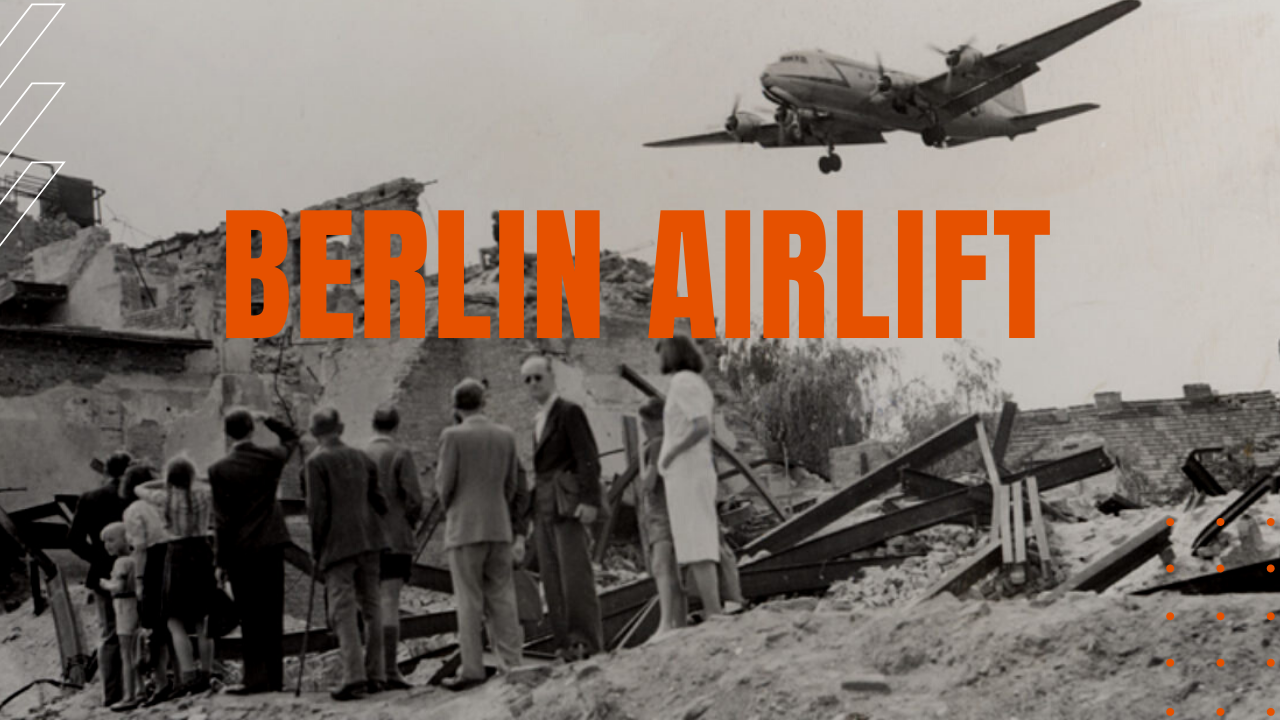The Berlin Airlift

After Berlin fell to the Russians in May of 1945, Germany lay powerless as the victorious Allies carved up the nation into four zones of occupation, including the four control zone sectors in Berlin, which as a whole lay in the Soviet’s sector.
Three years later, another battle would be fought in Berlin, this time a battle of political ideology, as well as the first chapter in the 43-year-long Cold War. For the first two months after the surrender of Germany, the Russians were the sole occupiers of Berlin, who made sincere strides to get the bombed-out and war-weary citizens of Berlin back on their feet again.
On July 1st, 1945, American, French and British garrisons moved into their sectors of the city, and while comradeship between the victors of World War Two appeared amicable at first, conflicts soon began to erode trust between the Soviets and the western powers.
The Russians proposed that the biggest socialist party of Germany should combine with the Communist Party, but the socialists in the western sector insisted on putting the issue to a vote, suspecting that unity with the Communists would eventually lead to unity under the Communists. The majority vote turned away from the Soviets, and since the Soviets had suffered egregious losses to German aggression in both world wars, Stalin was determined to turn Eastern Europe into a buffer zone to protect Russia from future Aryan hostilities.
After the United States, France and Britain combined their sectors of Germany to create a separate western state, the days of participation between the Soviets and western powers rapidly disintegrated. When the western powers replaced the grossly-inflated German currency with the Deutsche Mark—a currency that was only valid in West Germany, the first major act of the Cold War was officially on.
On June the 24th, 1948, the Russians stopped all rail service into and out of West Berlin, while on August 24th, Autobahn and canal links were also blockaded, with the hope of starving western powers out of Germany once and for all.
What Was the Berlin Airlift?
In response, American and British aircrews, along with five other lesser-involved Allied powers, began airlifting supplies for the 2 million Germans living in West Berlin, a monumental supply line feat that lasted until the Soviets ended their blockade on September 30th, 1949.
While the original plan called for 3,476 tons of supplies delivered daily, by the spring of 1949, that number would peak at 12,941 daily tons of coal and inbound essentials. The US Air Force delivered 1,783,573 tons of supplies—78.4% of the total, while the RAF delivered 541,937 tons.
Largely supported by C-47s and C-54s, the Berlin Airlift flew over 92 million miles, while at the height of the operation, one cargo plane landed in West Berlin every thirty seconds. The Berlin Blockade served to highlight the competing ideological visions for postwar Europe, while playing a major role in drawing West Germany into NATO’s orbit several years later in 1955.
